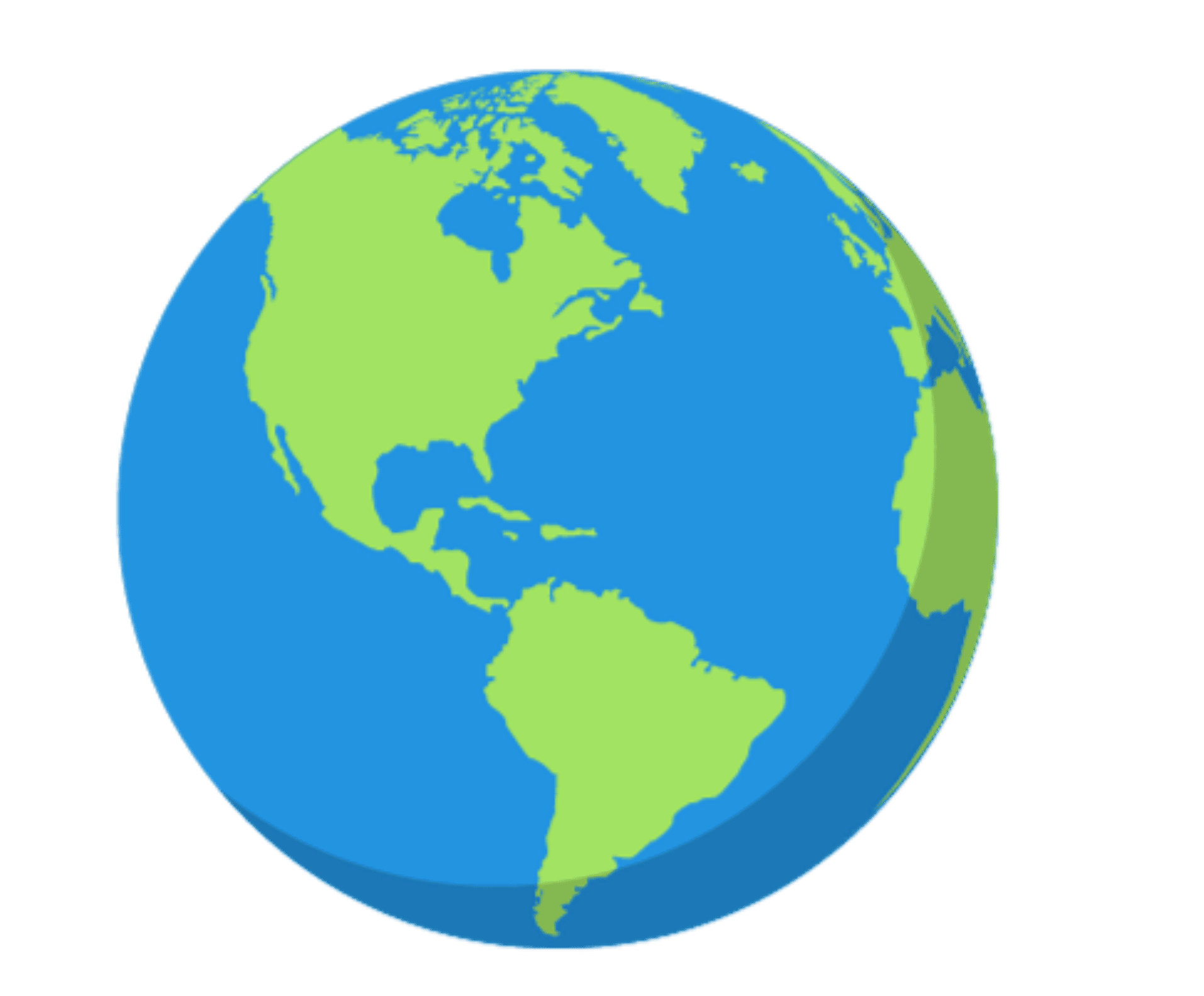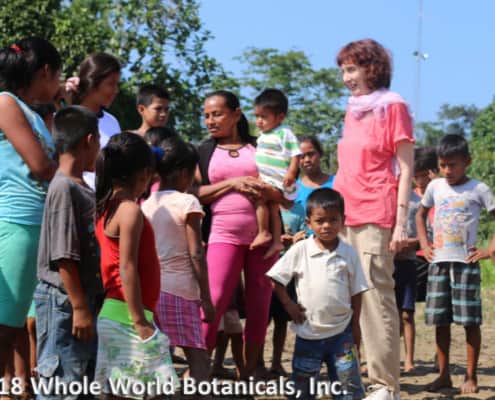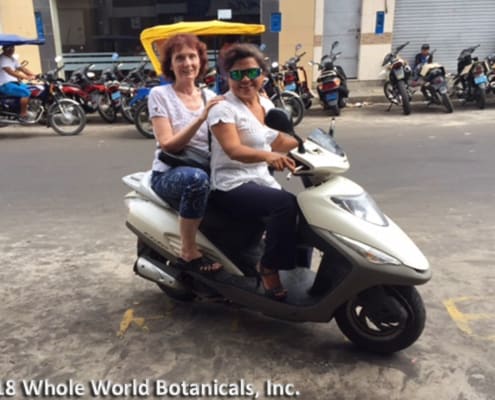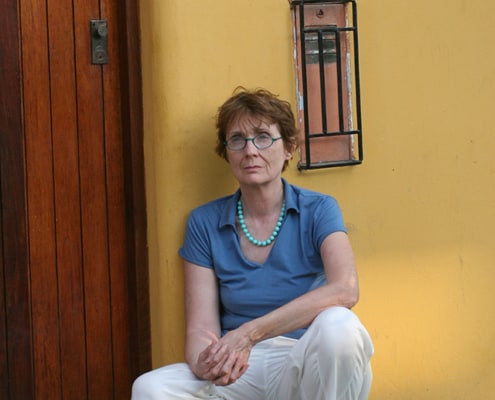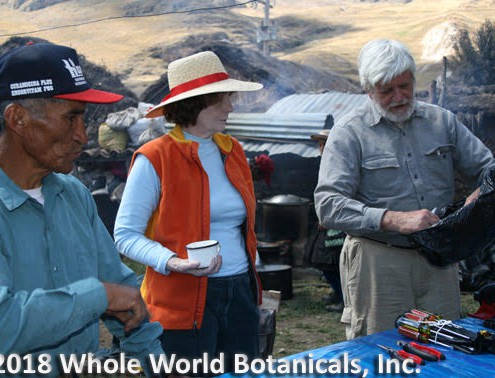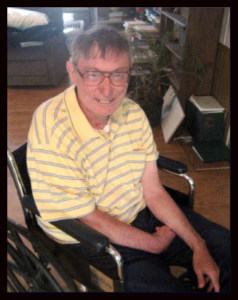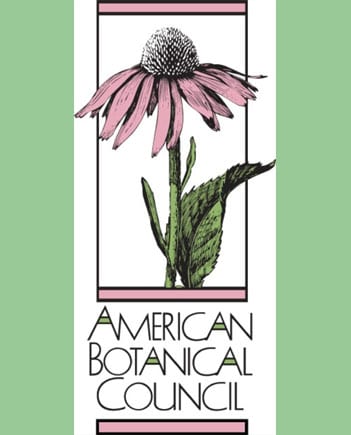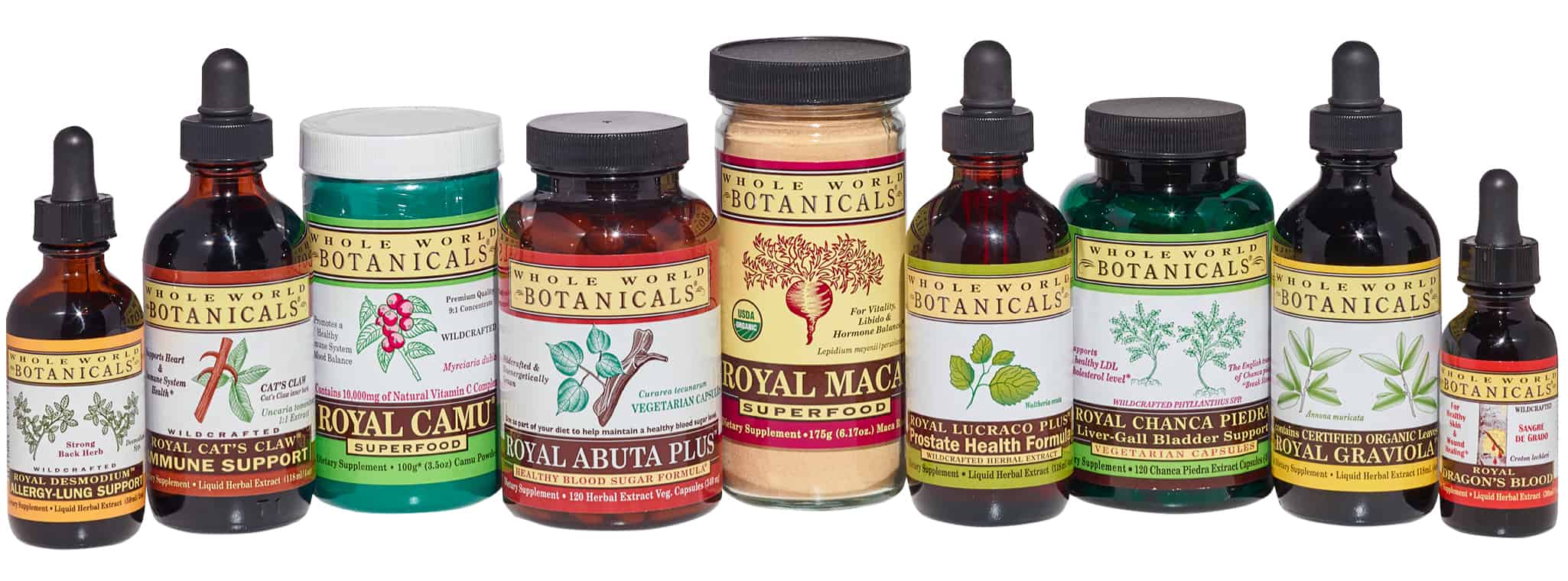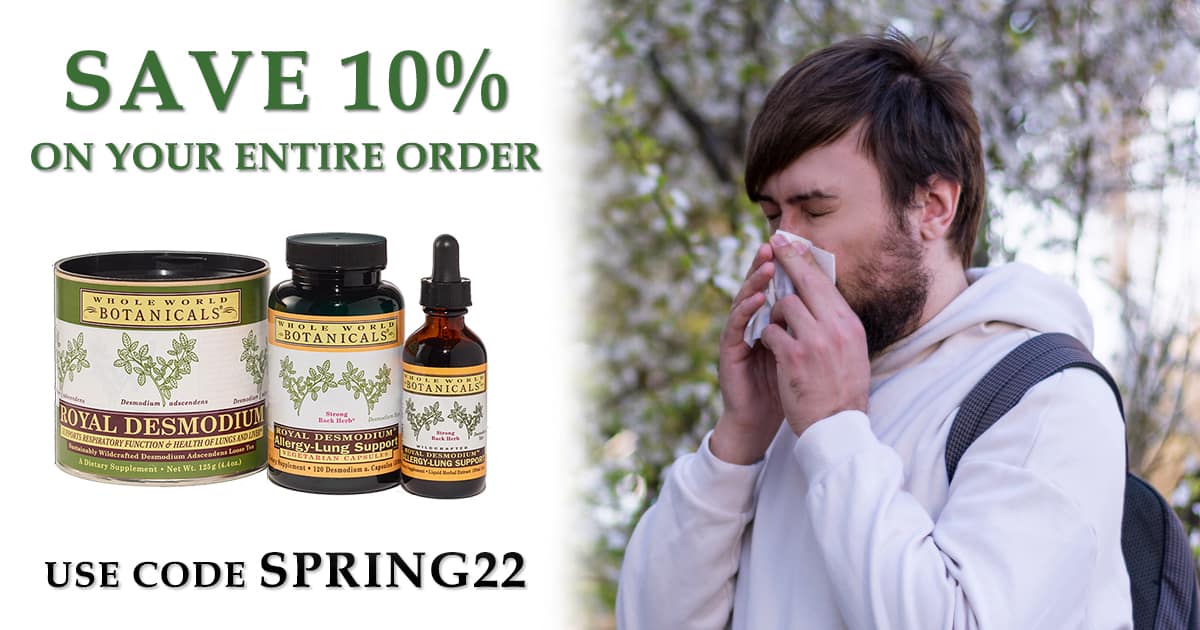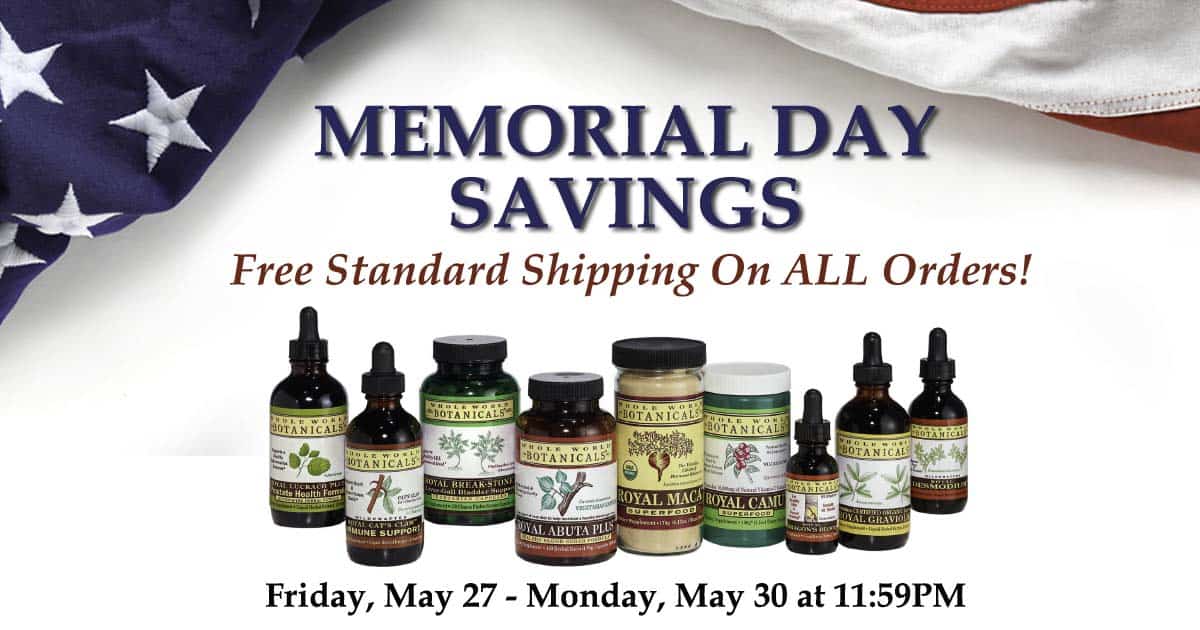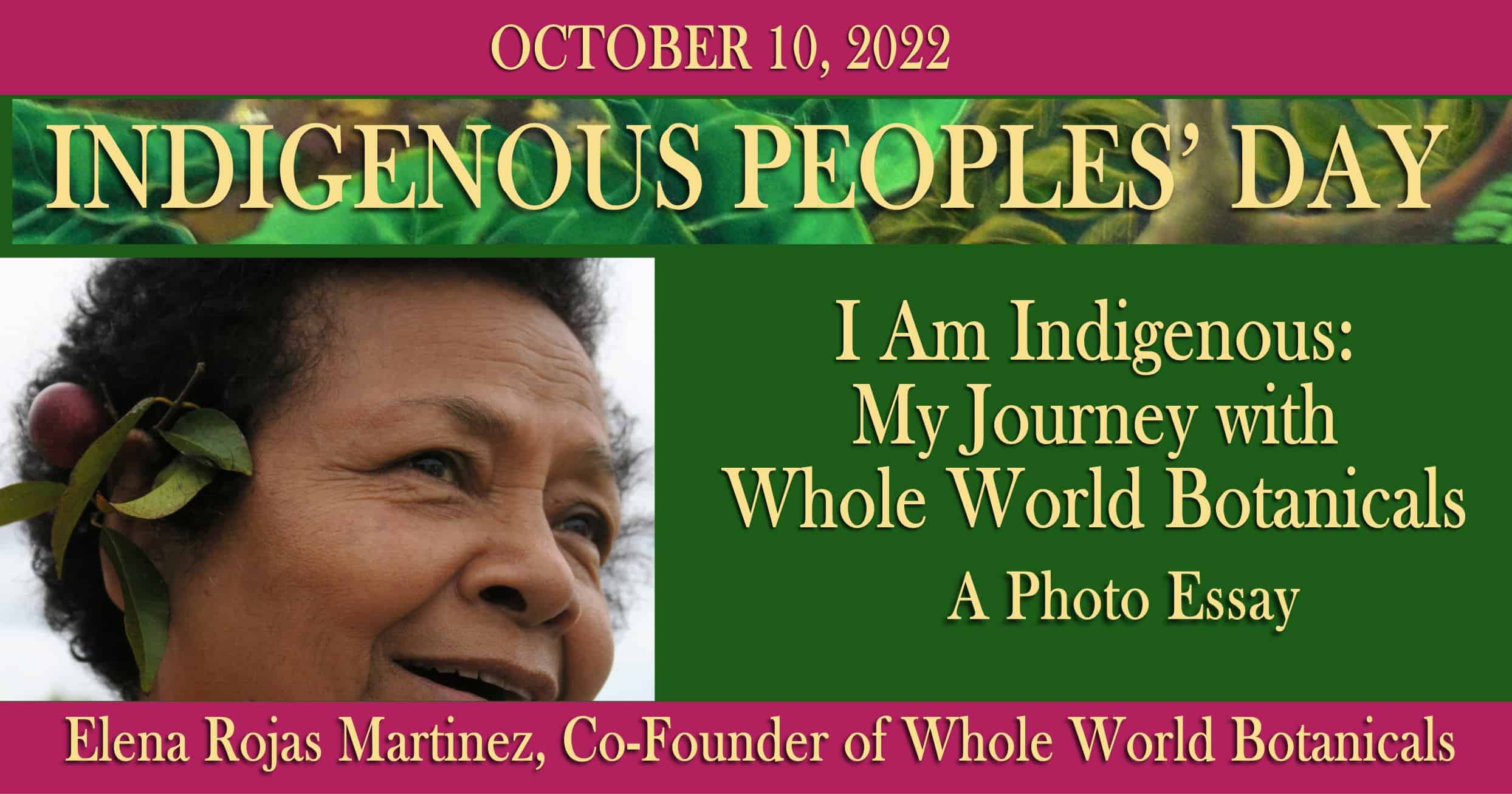Whole World Botanicals’ Co-Founders
In 1989, Viana, while serving as the Chair of the Department of Developmental Studies in an upstate New York community college, seized the opportunity to visit Peru with her sister meditator friend, Elena, on a school break between semesters. Although she had been visiting Peru since she was 11 years old, she had not been back since she was 27, when she visited Machi Picchu, long before there was a hotel there and before it had become a destination. In Lima, she heard about an exciting discovery made by the Peruvian press of the amazing properties of a botanical called Cat’s Claw. It was a time of the Peruvian awakening to the botanical treasures contained in their rainforest frontier.
Through Elena’s cousin, Felix, we met Ron and Phyllis Manus, who had spent almost 40 years with the Urarina people of Peru. They had been making Uña de Gato (Cat’s Claw) tea for years to help maintain their own health and to help reverse breast lumps (undiagnosed) in the breasts of the Christian women in the Urarina communities. Viana could not have known that two years later she would receive a breast cancer diagnosis, and that after chemo, surgery and radiation, Cat’s Claw would help her rebuild her immune system and restore her to vibrant health. She had no idea that her encounter with Cat’s Claw, which she brought back to the U.S. and began to offer to friends and friends of friends, would be an important part of her own quest for health— to become a post-cancer thriver.
VIANA MULLER, PhD
Viana Muller, PhD, is co-founder and President of Whole World Botanicals. She wishes to provide highly beneficial natural health products to consumers while helping the producing communities. “By founding Whole World Botanicals in 1995, I discovered a way to join forces with native people to provide a market for their medicinal herbs and to make them partners in our company’s venture by returning a percentage of profit,” states Dr. Muller.
“The trail that led me to studying the maca root began in 1989 during an anthropological field research trip to the jungles of Peru,” the anthropologist explains. “Then I came across Cat’s Claw which at that time was almost totally unknown in the U.S. From there I became involved in looking for other highly effective Peruvian medicinal herbs. In 1994, I came upon maca and spent the next two years researching its botany, historical use, and current use by native peoples and medical doctors practicing in Peru.”
“The farmers who produce maca are sheep, llama and cattle herders living under very harsh conditions in communities high that have existed for centuries in the Andes. In order to survive they need to partially integrate economically and socially into Peruvian society, but they still live on communal land that is distributed to households by the communal council. Decisions about what to grow and how to use the land are made by the council. They still speak Quechua, their ancestral language, and maintain many traditions such as the worship of Pachamama, Mother Earth.”
Dr. Viana Muller, co-founder of Whole World Botanicals
Elena Rojas-Martinez, co-founder of Whole World Botanicals
ELENA ROJAS-MARTINEZ, CMP
(Certified Midwife Practitioner)
“Growing up in an ancient town called Nasca, in Peru, I had the good fortune of being born into a family who knew the local herbs from our coastal area very well. My family was always in contact with people from the highlands who brought us herbs from the Andes and from the rainforest, for these two regions have been connected since prehistoric times. I was always attracted to all of this knowledge, it seemed so mysterious and powerful to me – the results of these medicinal plants were astonishing!
“My grandmother on my father’s side was part Indian and part African, a tall, proud woman who was a bonesetter, who set people’s broken bones and who put dislocated bones back in place, using her hands. She then wrapped the traumatized area with crushed fresh herbs, tied in place with a piece of cloth. She was also a healer of children by means of laying on of hands. One of my earliest memories was watching the mothers lined up outside of our house with their sick babies and children, waiting for Mama Elena’s miraculous touch.
“My mother was an Indian woman from the Department of Ayacucho in the Peruvian Andes whose first language was Quechua, the original Peruvian language. From the time I was a small child, both my Mama Elena and my mother would take me with them when they went on their herbal expeditions. Near Nasca the best herbs were found near the small rivers and at the “ojos” (small holes) opening to the ancient underground water canals built by the people of the Nasca civilization, which flourished about 800 years before the Incas. In these areas there was a profusion of wild plants, many edible, including tiny wild tomatoes, tiny wild squash of many varieties, and small wild beans and a plant similar to asparagus, in miniature size. There were a variety of medicinal plants; herbs used to relieve stomach pain, stop coughs, calm the nerves, herbs for eye infections and anti-inflammatory herbs.
“These early experiences influenced me to become a midwife and eventually led to my deep desire to found an herbal company which would spread the knowledge and make available these powerful and sacred Peruvian herbs to people all over the world.” ~ Elena Rojas-Martinez
SIDNEY McDANIEL, PhD
On November 12, 2017, we suffered a great loss with the death of Dr. Sidney McDaniel Ph.D., the third co- founder of Whole World Botanicals. Sidney was one of the premier botanical taxonomists in the world. He was a Professor of Botany at Mississippi State University and founder of the Institute for Botanical Exploration whose field station was established in Iquitos, Peru, in 1972. He was knowledgeable about all plant families, specializing in the Upper Amazon River Basin.
Sidney was instrumental in the formation of Whole World Botanicals; identifying plant samples for us, providing guidance on various botanical issues, and introducing us to the expert indigenous field botanist, Manuel Rimachi (who he trained since Manuel was 16 years old). Sidney was extremely generous to us with his time and talent.
Our debt to Sidney is eternal. We would never have had the courage or the expertise to start the company without him. Thank you, Sidney, from the bottom of our hearts.
